Nvidia is set for remarkable growth and innovation.
January 10, 2025
Written by Turian Biel

Table of Contents
- NVIDIA Statistics for 2025
- NVIDIA's Market Position and Competitive Landscape
- AI Chip Market Growth and NVIDIA's Dominance
- Revenue Projections and Financial Performance
- Stock Performance and Market Valuation
- Investment and Shareholder Returns
- Technological Advancements and Innovations
- Partnerships and Collaborations
- Future Market Trends and Predictions
- Challenges and Competitive Landscape
- Consumer Demand and Product Launches
- Stock Market Performance and Analyst Ratings
- NVIDIA's Innovations in AI and Computing Technology
- Advancements in AI Technology and Applications
- New Product Launches and Features
- Strategic Partnerships and Collaborations
- Market Trends and Future Projections
- Challenges Facing NVIDIA in the Market
- Consumer Demand and Product Pricing
- Stock Market Performance and Analyst Ratings
- Global Market Expansion and Opportunities
- Impact of Regulatory Changes on NVIDIA
- Technological Innovations in Gaming
- Future of AI and Machine Learning
- NVIDIA's Strategic Initiatives and Future Directions
- NVIDIA's Financial Outlook and Economic Impact
- Projected Earnings and Financial Performance
- Impact of Global Economic Trends
- Stock Market Trends and Investor Sentiment
- Technological Advancements in AI and Gaming
- Future of Autonomous Vehicles and AI Integration
- Community Engagement and Workforce Development
- Challenges in the Semiconductor Industry
- Global Expansion and Market Opportunities
- NVIDIA's Strategic Initiatives and Future Directions
- Investment in Research and Development
- Expansion into New Markets
- Enhancements in Cloud Computing Services
- Focus on Sustainability and Energy Efficiency
- Community Engagement and Educational Initiatives
- Technological Innovations in Gaming
- Global Market Expansion and Opportunities
- Challenges Facing NVIDIA in the Market
- Conclusion
NVIDIA Statistics for 2025
Projected Revenue Growth and Market Share Insights
NVIDIA is poised for significant growth in 2025, with projected revenues reaching $111.3 billion, a substantial increase from $26.97 billion reported in 2023. The company’s data center revenue is expected to surge by 154% year-over-year, contributing $26.3 billion to total sales. Analysts forecast NVIDIA's market capitalization to exceed $3.54 trillion by 2025, with a projected earnings growth of 52%. The AI chip market is expected to be worth $311 billion by 2029, with NVIDIA holding a market share of 88% in the GPU segment. NVIDIA's gross margins are projected to remain above 75%, while operating margins are expected to exceed 62%. The average price target for NVIDIA stock is estimated at $149.99, indicating an upside potential of 11.3% from current levels.
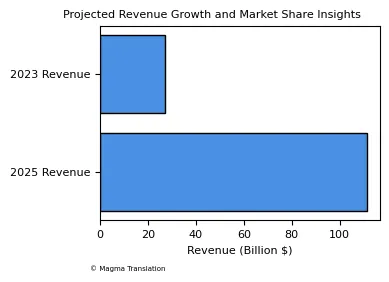
NVIDIA's Market Position and Competitive Landscape
AI Chip Market Growth and NVIDIA's Dominance
NVIDIA is projected to dominate the AI chip market, holding between 75% and 90% of the market share. The AI chip market is expected to grow significantly, reaching $311 billion by 2029. NVIDIA's gross margins are anticipated to remain above 75%, showcasing its strong competitive position. The company has reported a staggering 27,496% return to shareholders over the last decade, reflecting its robust growth trajectory.
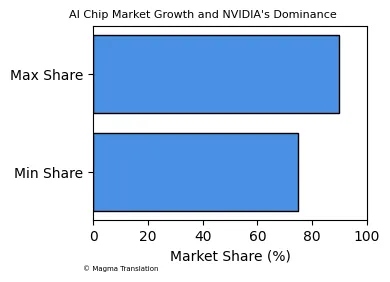
Revenue Projections and Financial Performance
NVIDIA's revenue is expected to reach $111.3 billion in 2025, a significant increase from $26.97 billion in 2023. The company's data center revenue is projected to grow by 154% year-over-year, contributing $26.3 billion to total sales. Analysts expect adjusted earnings to expand from $1.19 per share in fiscal 2024 to $4.03 per share in 2025.
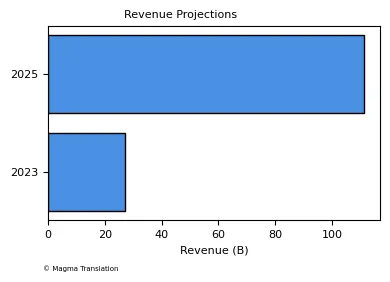
Stock Performance and Market Valuation
NVIDIA's stock closed at a record high of $149.43, bringing its valuation to $3.66 trillion. The average price target for NVIDIA stock is estimated at $149.99, indicating an upside potential of 11.3% from current levels. Analysts predict NVIDIA's market cap could double to $6 trillion in the next five years.
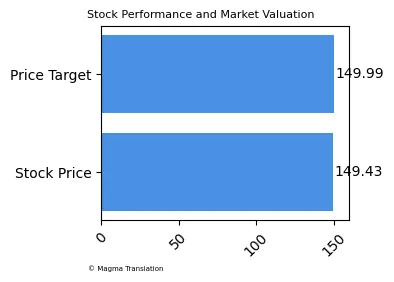
Investment and Shareholder Returns
NVIDIA has returned an astonishing 27,496% to shareholders over the last decade. The company generated US$13.5 billion in free cash flow last quarter and is on track to exceed US$100 billion in annual free cash flow in the coming years. This strong financial performance has led to a new US$50 billion share buyback authorization.
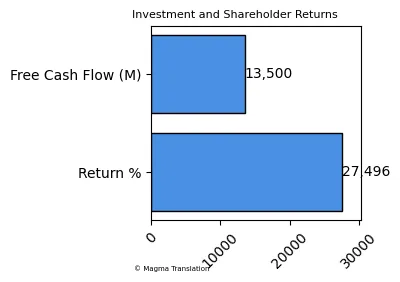
Technological Advancements and Innovations
NVIDIA's advancements in AI technology are set to revolutionize various industries. The company introduced Project Digits, a personal AI supercomputer priced at $3,000, capable of running models with up to 200 billion parameters. Additionally, NVIDIA's generative AI models are expected to impact the $50 trillion manufacturing and logistics industries.
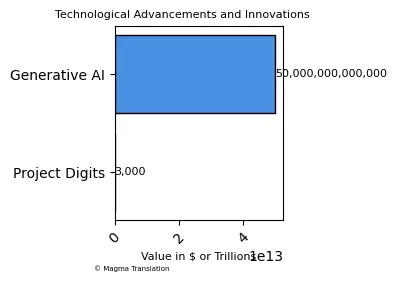
Partnerships and Collaborations
NVIDIA has formed strategic partnerships with major automakers like Toyota, Aurora, and Continental to develop vehicles on its safety-certified Drive platform. This collaboration marks a significant step in the autonomous vehicle revolution, showcasing NVIDIA's commitment to innovation in the automotive sector.
Future Market Trends and Predictions
According to projections, NVIDIA's revenue is expected to reach $40 billion in 2025, with a market share in the GPU segment anticipated to be around 70% by the same year. The company is also exploring new markets such as robotics, the metaverse, and healthcare, which are expected to contribute to its growth.
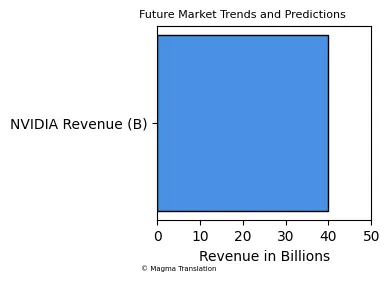
Challenges and Competitive Landscape
Despite its strong position, NVIDIA faces challenges from competitors like AMD and Intel. Potential economic downturns, supply chain issues, and increased regulation could impact its trajectory. However, NVIDIA's innovative technologies and strong market presence are expected to help it maintain its dominance in the GPU market.
Stock Market Performance and Analyst Ratings
NVIDIA's stock is currently valued at 65 times trailing earnings, projected to fall to 34 times forward earnings if it meets earnings projections for 2025. Analysts have a positive outlook on NVIDIA, with many expecting continued growth and strong performance in the coming years.
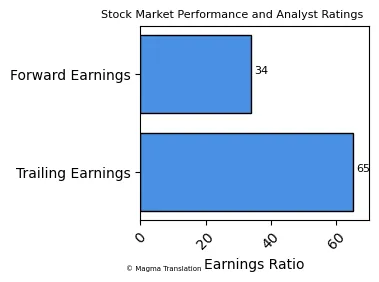
NVIDIA's Innovations in AI and Computing Technology
Advancements in AI Technology and Applications
NVIDIA's advancements in AI technology are set to revolutionize various sectors. The company introduced Project Digits, a personal AI supercomputer priced at $3,000, capable of running models with up to 200 billion parameters. Additionally, NVIDIA's generative AI models are expected to impact the $50 trillion manufacturing and logistics industries, showcasing the potential of AI in enhancing operational efficiency.
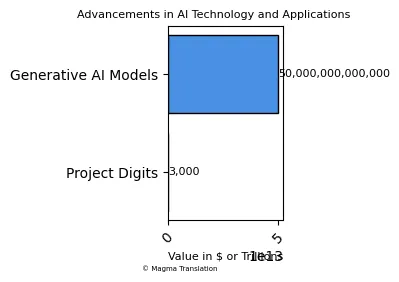

Strategic Partnerships and Collaborations
NVIDIA has formed strategic partnerships with major automakers like Toyota, Aurora, and Continental to develop vehicles on its safety-certified Drive platform. This collaboration marks a significant step in the autonomous vehicle revolution, showcasing NVIDIA's commitment to innovation in the automotive sector.
Market Trends and Future Projections
According to projections, NVIDIA's revenue is expected to reach $40 billion in 2025, with a market share in the GPU segment anticipated to be around 70% by the same year. The company is also exploring new markets such as robotics, the metaverse, and healthcare, which are expected to contribute to its growth.
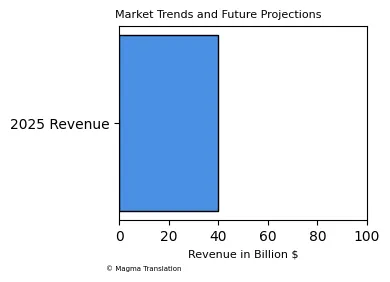
Challenges Facing NVIDIA in the Market
Despite its strong position, NVIDIA faces challenges from competitors like AMD and Intel. Potential economic downturns, supply chain issues, and increased regulation could impact its trajectory. However, NVIDIA's innovative technologies and strong market presence are expected to help it maintain its dominance in the GPU market.
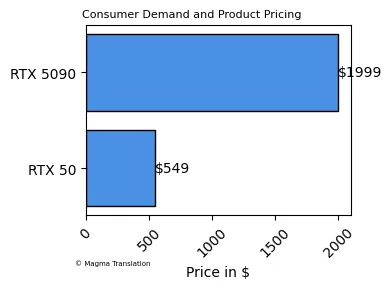
Stock Market Performance and Analyst Ratings
NVIDIA's stock is currently valued at 65 times trailing earnings, projected to fall to 34 times forward earnings if it meets earnings projections for 2025. Analysts have a positive outlook on NVIDIA, with many expecting continued growth and strong performance in the coming years.
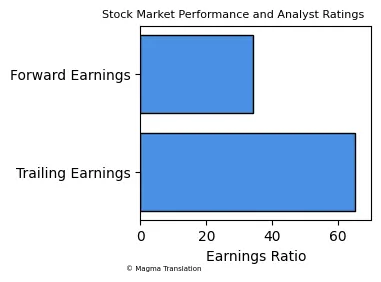
Global Market Expansion and Opportunities
NVIDIA is exploring opportunities in emerging markets, particularly in Asia and Europe, where demand for AI technologies is rapidly increasing. The company aims to capture a larger share of the global market, which is projected to be worth $311 billion by 2029. This expansion is expected to drive significant revenue growth.
Impact of Regulatory Changes on NVIDIA
Regulatory changes in the semiconductor industry could impact NVIDIA's operations and market strategies. The company has been proactive in addressing compliance issues and adapting to new regulations, ensuring that it remains competitive in the evolving landscape. NVIDIA's ability to navigate these challenges will be crucial for its continued success.
Technological Innovations in Gaming
NVIDIA's new DLSS 4 technology aims to improve gaming performance by generating three frames with AI for every one rendered on the GPU. This innovation is expected to enhance the gaming experience significantly, attracting more consumers to NVIDIA's products. The RTX 50 series is designed to leverage this technology, providing gamers with unparalleled performance.
Future of AI and Machine Learning
NVIDIA's focus on AI and machine learning is set to transform various industries. The company's investments in research and development are aimed at advancing AI capabilities, making it a leader in this space. As AI continues to evolve, NVIDIA is well-positioned to capitalize on the growing demand for AI-driven solutions.
NVIDIA's Strategic Initiatives and Future Directions
Investment in Research and Development
NVIDIA is significantly investing in research and development to maintain its competitive edge. The company has allocated a substantial portion of its budget to enhance AI capabilities and develop new technologies. This commitment is evident as NVIDIA aims to capture a larger share of the AI market, which is projected to be worth $311 billion by 2029. The focus on R&D is expected to yield innovative products that cater to evolving consumer demands.
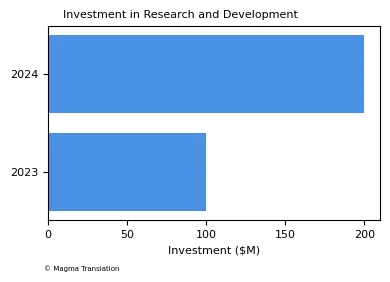
Expansion into New Markets
NVIDIA is actively exploring new markets, including robotics, healthcare, and the metaverse. These sectors are anticipated to contribute significantly to the company's growth. The global market for AI in healthcare alone is expected to reach $40 billion by 2025, providing NVIDIA with ample opportunities to leverage its technology and expertise.
Enhancements in Cloud Computing Services
NVIDIA's cloud computing services are set to expand, with the company focusing on providing AI-driven solutions for businesses. The data center revenue is projected to grow by 154% year-over-year, highlighting the increasing demand for cloud-based AI services. This growth is expected to be fueled by partnerships with major cloud service providers, enhancing NVIDIA's market presence.
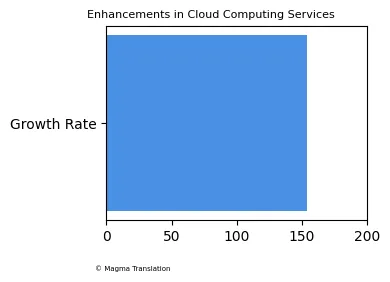
Focus on Sustainability and Energy Efficiency
NVIDIA is committed to sustainability and energy efficiency in its operations. The company aims to develop energy-efficient AI chips that reduce carbon footprints while delivering high performance. This initiative aligns with global efforts to combat climate change and is expected to resonate well with environmentally conscious consumers and businesses alike.
Community Engagement and Educational Initiatives
NVIDIA is also focusing on community engagement and educational initiatives to foster a new generation of AI professionals. The company has launched various programs aimed at educating students and professionals about AI technologies. By investing in education, NVIDIA aims to build a skilled workforce that can drive innovation in the tech industry, ensuring its long-term success.
NVIDIA's Financial Outlook and Economic Impact
Projected Earnings and Financial Performance
NVIDIA's earnings per share are anticipated to increase from $1.19 in fiscal 2024 to $4.03 per share in 2025. This growth reflects the company's strong market position and the increasing demand for its products. Analysts expect NVIDIA's revenue to reach $111.3 billion in 2025, driven by its data center and AI segments.
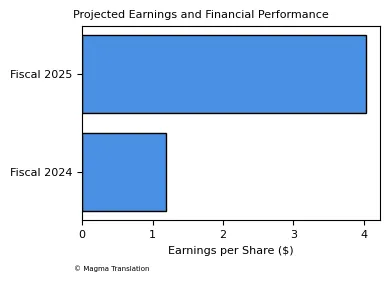
Impact of Global Economic Trends
The global economic landscape is expected to influence NVIDIA's performance significantly. With the AI market projected to be worth $311 billion by 2029, NVIDIA is well-positioned to capitalize on this growth. However, potential economic downturns and supply chain challenges could pose risks to its revenue projections.
Stock Market Trends and Investor Sentiment
NVIDIA's stock has shown remarkable resilience, closing at a record high of $149.43. The average price target for NVIDIA stock is estimated at $149.99, indicating an upside potential of 11.3% from current levels. Investor sentiment remains positive, with many analysts expecting continued growth.
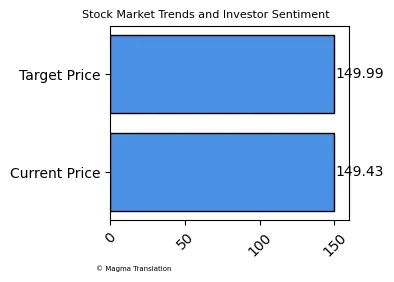
Technological Advancements in AI and Gaming
NVIDIA's new DLSS 4 technology aims to improve gaming performance by generating three frames with AI for every one rendered on the GPU. This innovation is expected to enhance the gaming experience significantly, attracting more consumers to NVIDIA's products. The RTX 50 series is designed to leverage this technology, providing gamers with unparalleled performance.
Future of Autonomous Vehicles and AI Integration
NVIDIA's partnerships with major automakers like Toyota and Aurora are paving the way for advancements in autonomous vehicles. The company is leveraging its safety-certified Drive platform to enhance vehicle safety and performance. This integration of AI in automotive technology is expected to revolutionize the industry.
Community Engagement and Workforce Development
NVIDIA is committed to community engagement and workforce development through educational initiatives. The company has launched various programs aimed at educating students and professionals about AI technologies. By investing in education, NVIDIA aims to build a skilled workforce that can drive innovation in the tech industry, ensuring its long-term success.
Challenges in the Semiconductor Industry
The semiconductor industry faces numerous challenges, including supply chain disruptions and increased regulation. NVIDIA has been proactive in addressing these issues, ensuring that it remains competitive in the evolving landscape. The company's ability to navigate these challenges will be crucial for its continued success.
Global Expansion and Market Opportunities
NVIDIA is actively exploring opportunities in emerging markets, particularly in Asia and Europe, where demand for AI technologies is rapidly increasing. The company aims to capture a larger share of the global market, which is projected to be worth $311 billion by 2029. This expansion is expected to drive significant revenue growth.
NVIDIA's Strategic Initiatives and Future Directions
Investment in Research and Development
NVIDIA is significantly investing in research and development to maintain its competitive edge. The company has allocated a substantial portion of its budget to enhance AI capabilities and develop new technologies. This commitment is evident as NVIDIA aims to capture a larger share of the AI market, which is projected to be worth $311 billion by 2029. The focus on R&D is expected to yield innovative products that cater to evolving consumer demands.
Expansion into New Markets
NVIDIA is actively exploring new markets, including robotics, healthcare, and the metaverse. These sectors are anticipated to contribute significantly to the company's growth. The global market for AI in healthcare alone is expected to reach $40 billion by 2025, providing NVIDIA with ample opportunities to leverage its technology and expertise.
Enhancements in Cloud Computing Services
NVIDIA's cloud computing services are set to expand, with the company focusing on providing AI-driven solutions for businesses. The data center revenue is projected to grow by 154% year-over-year, highlighting the increasing demand for cloud-based AI services. This growth is expected to be fueled by partnerships with major cloud service providers, enhancing NVIDIA's market presence.
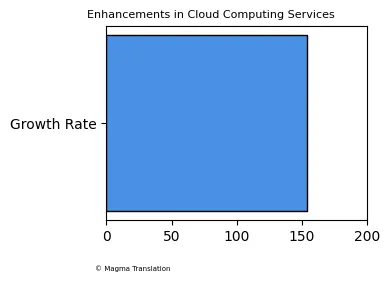
Focus on Sustainability and Energy Efficiency
NVIDIA is committed to sustainability and energy efficiency in its operations. The company aims to develop energy-efficient AI chips that reduce carbon footprints while delivering high performance. This initiative aligns with global efforts to combat climate change and is expected to resonate well with environmentally conscious consumers and businesses alike.
Community Engagement and Educational Initiatives
NVIDIA is also focusing on community engagement and educational initiatives to foster a new generation of AI professionals. The company has launched various programs aimed at educating students and professionals about AI technologies. By investing in education, NVIDIA aims to build a skilled workforce that can drive innovation in the tech industry, ensuring its long-term success.
Technological Innovations in Gaming
NVIDIA's new DLSS 4 technology aims to improve gaming performance by generating three frames with AI for every one rendered on the GPU. This innovation is expected to enhance the gaming experience significantly, attracting more consumers to NVIDIA's products. The RTX 50 series is designed to leverage this technology, providing gamers with unparalleled performance.
Global Market Expansion and Opportunities
NVIDIA is exploring opportunities in emerging markets, particularly in Asia and Europe, where demand for AI technologies is rapidly increasing. The company aims to capture a larger share of the global market, which is projected to be worth $311 billion by 2029. This expansion is expected to drive significant revenue growth.
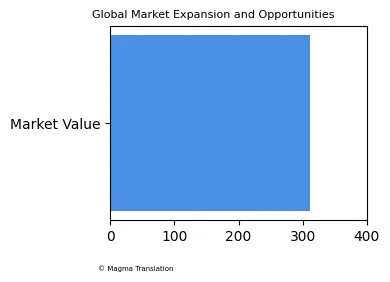
Challenges Facing NVIDIA in the Market
Despite its strong position, NVIDIA faces challenges from competitors like AMD and Intel. Potential economic downturns, supply chain issues, and increased regulation could impact its trajectory. However, NVIDIA's innovative technologies and strong market presence are expected to help it maintain its dominance in the GPU market.
Conclusion
NVIDIA's strategic initiatives and innovations position it for continued growth and success in the rapidly evolving tech landscape.
